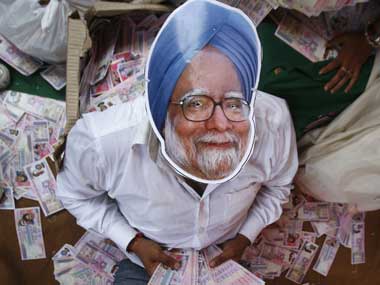Inflation targeting should be the first and primary objective of the Reserve Bank of India (RBI). The other objectives should be secondary, and this includes growth objectives.
There are some sections in the market that believe that India is a growth economy and the RBI should tolerate higher levels of inflation to achieve the growth objective. A growth-oriented RBI will be a disaster in the Indian context as India’s debt is predominantly funded by domestic savers and inflation will hit the saving population the most. The RBI should not tolerate higher levels of inflation and should strive to bring down inflation to its medium term targets.
The medium term target rate for inflation is below 5 percent. Inflation, as measured by the WPI (Wholesale Price Index), is running at 9.7 percent as of September 2011 and, as per the RBI’s expectation, inflation should trend down to 7 percent levels as of March 2012. Inflation in India has been running at over 7 percent since December 2009, touching highs of 11.23 percent in March 2010 (as per the old WPI series).
The central bank has raised the benchmark repo rate by 375 basis points (bps, where 100 bps equals 1 percent) over the last 20 months to bring down inflation expectations and while it has given us a guidance that rate hikes will stop if inflation trends down, it has not deviated from its inflation control policy.
[caption id=“attachment_125020” align=“alignleft” width=“380” caption=“There are some sections in the market that believe that India is a growth economy and the RBI should tolerate higher levels of inflation to achieve the growth objective. A growth-oriented RBI will be a disaster in the Indian context as India’s debt is predominantly funded by domestic savers and inflation will hit the saving population the most.Reuters.”]  [/caption]
Inflation and rate hikes are affecting India’s economic growth. GDP growth is forecast to come down to 7.6 percent levels in 2011-12 from 8.6 percent levels in 2010-11. The drop in growth is prompting some economists, business lobbies and some sections of the financial markets to tell RBI to look at growth and tolerate inflation at 6-7 percent levels. A drop in economic growth typically means lower profits for corporates and lower or negative returns for the market and lower kickbacks for politicians; hence the call for the RBI to tolerate higher levels of inflation.
Let us assume the RBI tolerates higher levels of inflation and loosens its grip on policy rates and other policy tools are used to fight inflation (though there is no sign of that). Inflation will then remain at higher levels and these higher levels will then have its effect on domestic savers, who largely depend on fixed return instruments for their savings.
When inflation runs higher than the rate of return offered by provident funds, small savings schemes and bank deposits, it is tantamount to a huge tax on savers as seen in the last two years. Inflation has consistently been higher than provident fund rates at 8.5 percent, small savings rates of 8 percent and bank deposit rates of less than 8 percent (two-year average tenure).
Savers also lose out indirectly as a large part of their savings is exposed to government bond yields which rise sharply (value of government bond goes down when yields rise) and the institutions holding these bonds have to face a depreciation on their assets.
The Indian government is cannibalising the savings of its citizen. The exposure to government debt for the Indian citizen is through compulsory provident and pension fund investments (nearly 20 percent of gross salary goes into this), through savings in the form of bank deposits (banks have to necessarily invest 25 percent of their net deposits in government debt), through other forms of savings instruments like national savings schemes, post office deposits, etc.
The government also makes sure that over 25 percent of insurance investments goes into government bonds and those investments come from premiums paid by the citizens. Government debt in India is predominantly internal (98 percent of GDP) and denominated in rupees and inflation brings down the value of government debt.
The average person on the street is given a double whammy by high inflation. One is by eating into savings, and the second is by indirectly weakening the balance-sheets of institutions holding government debt. There is no place to hide for the saver as India does not have capital account convertibility and the saver cannot take his money out of the country.
The RBI should protect savers first and that means inflation has to be under control.
Arjun Parthasarathy is the Editor of www.investorsareidiots.com, a web site for investors.


)
)
)
)
)
)
)
)
)



